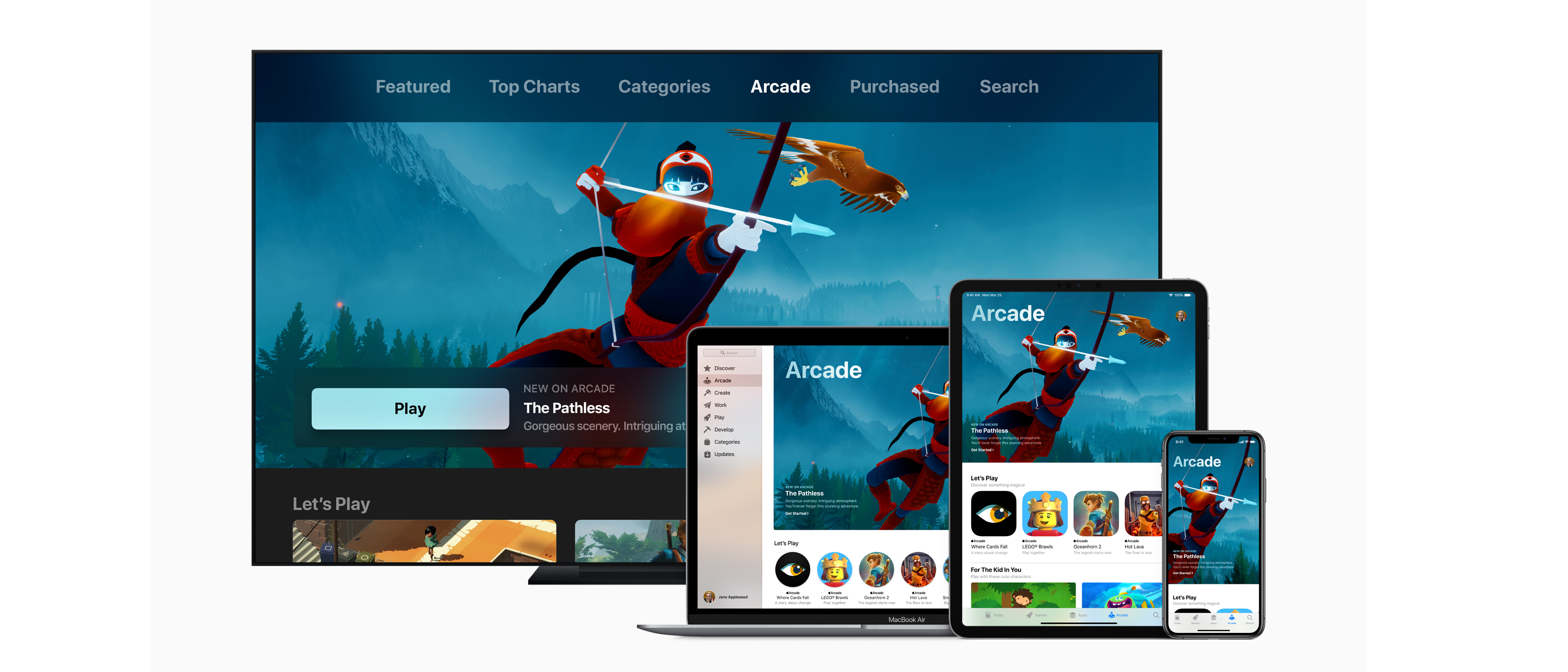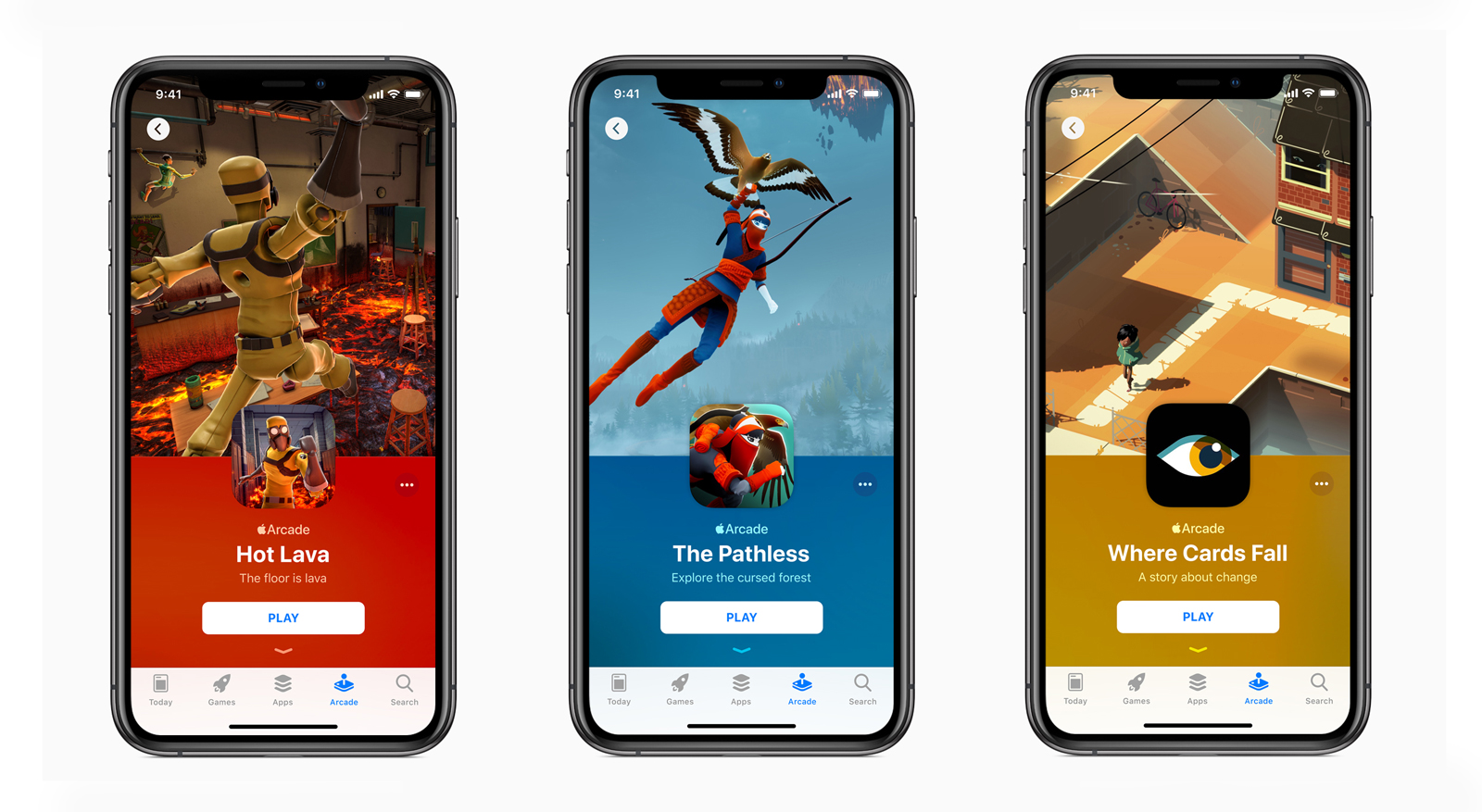The Apple Arcade strategy so far, and why it could work
It's the best news for Mac gaming in years

If you’re tired of the mess of free-to-play and ad-supported games available on your iPhone, Apple Arcade is a promising solution: play anything you want from a curated catalogue of titles that don’t have any frustrating or distracting microtransactions. If you want, switch over to play it on your iPad, Mac or Apple TV – the service saves your in-game progress between platforms. Best of all, the catalogue includes some games that won’t be available anywhere else.
Simplicity and exclusivity – that’s Apple’s pitch. Its upcoming gaming service is slated to launch in ‘fall 2019’ in over 150 regions, though the company has kept mum about a lot of specifics. While we had a lot of questions when the service was introduced, some of those have been answered – and we have a clearer idea of who the service is for and how it will try to carve out a space in the crowded gaming ecosystem.
First, what the service is not: competing with platforms offering AAA games. Thanks to Apple’s inflexible requirement that games on Apple Arcade must be playable on iOS, macOS and tvOS, nothing in the catalogue will likely be a graphical powerhouse like those coming out for the latest consoles and PC. There’s a lot else we aren’t sure of, like its multiplayer capabilities, that could limit what kinds of games we’ll see on the service.
[Apple Arcade's] continuing appeal depends on Apple’s curation.
But here’s what Apple believes Apple Arcade does offer: unique (and some exclusive) games that could only happen on its service, which is easy to play and easier to get into since the potential userbase is (almost) every iPhone, iPad, Mac and Apple TV owner.
(We don’t know exactly which older devices will be compatible with Arcade; the only official word thus far is a small disclaimer in the announcement video stating “Compatible hardware and software required.” We do know that developers will design their titles to require devices to run a certain version or newer of each OS, but those thresholds haven’t been officially announced yet, and may end up being particular to each game.)
Of course, its catalogue will probably make or break Apple Arcade’s appeal. And yes, Apple assembled an impressive list of popular studios, large and small (Sega, Annapurna, Klei, Konami, Lego, and many others), to boost the service’s credibility. Those launch titles will only carry it so far, though: the continuing appeal depends on Apple’s curation.

How Apple will carve out its own space
That’s because Apple is getting very hands-on with Arcade, taking an active role in guiding developers to produce games that fit the service. This almost certainly means titles will be family-friendly across the board, but there are other abstract criteria that the company isn’t discussing this early. But this far out, it’s clear that Apple wants Arcade’s collection to be two things: broadly appealing and unique.
Get daily insight, inspiration and deals in your inbox
Sign up for breaking news, reviews, opinion, top tech deals, and more.
It will accomplish the former by attracting both indie developers and huge brands; Team Sonic Racing and two Lego titles, for example, are among the growing list of confirmed titles. To get unique games, Apple is offering to financially assist developers during production. But they also believe Arcade’s subscription model – which guarantees some degree of regular income – will allow developers to take more risks and make the games they want instead of forcing monetization into the design to ensure revenue flow.
Looking at the games that have been confirmed, which Gamespot has helpfully collected, we see a collection of titles across many genres, all with strong artistic styles and many that sport inventive premises. There’s even an AR game or two in there, hinting at where Apple wants to expand. The collection will likely have something for everyone, including families with young children (each subscription supports Family Share, allowing up to six people to play on the same account).
Some of these games will only be on Apple Arcade, conceivably forever. But there’s various tiers of exclusivity here, and the lowest will simply guarantee that this is the only mobile gaming platform that some of these titles will be playable on. You’ll still be able to pick those low-exclusivity titles up elsewhere – Giant Squid Studio’s adventure game The Pathless, for example, was previously announced for PS4 and PC via the Epic Store – but it’ll be looped in to the Arcade’s collection as a nice, fitting addition.
What won’t Arcade have? Fortnite. You can already play it for free, duh – but more to the point, Arcade will be nested in its own tab within the App Store. In other words, Apple sees Arcade as a pillar in an overall gaming ecosystem rather than a standalone service siloed in its own app. If you want to download Fortnite, Clash Royale or other F2P titles, they’re just a tab away.

Who really wins: Mac owners
Arcade’s game library will still have to win over fans on all platforms, but one consumer group will find it more appealing than others: Mac owners. The historically underserved group has made do with the limited releases or just running Windows OS via BootCamp, and it rarely gets first-run games when they’re initially launched. Mac hardware isn’t terribly great for cutting-edge gaming, either, and last year’s macOS High Sierra update enabled external GPUs over Thunderbolt 3 cords – but excluded Nvidia support.
In other words, Arcade is the best first-party Apple news to happen to Mac gamers in years – and the same is true of AppleTV owners, who have had minimal big-name games come to the platform, especially since the experiment bringing Minecraft to the platform was quietly shuttered due to lack of interest. Both of these groups will probably be very interested in what Arcade has to offer. Lest you worry about the different interfaces between games, some will support controllers.
One consumer group will find it more appealing than others: Mac owners.
Of course, Mac owners might just bypass technical requirements entirely if Google Stadia’s streaming service ends up working seamlessly over the browser, as promised. Apple Arcade’s minor advantage: its games are playable once downloaded, meaning you don’t have to sustain an internet connection, which is appealing for folks without reliable connectivity.
Ergo, Arcade’s appeal will lean heavily on its content. The service will have over 100 games (either at its ‘fall 2019’ launch or after is unclear), which are curated by experts. That initial salvo may have several big titles that appear elsewhere, but we might not see the real standouts until Apple’s publisher-like guidance and financial support allow developers to really stretch their creative muscles and make experiences we won’t find anywhere else.
David is now a mobile reporter at Cnet. Formerly Mobile Editor, US for TechRadar, he covered phones, tablets, and wearables. He still thinks the iPhone 4 is the best-looking smartphone ever made. He's most interested in technology, gaming and culture – and where they overlap and change our lives. His current beat explores how our on-the-go existence is affected by new gadgets, carrier coverage expansions, and corporate strategy shifts.
